So perhaps you have used the magnificent EnviroSafe fly trap to catch those nuisance flies and you have been amazed at the results. But to really keep on top of problem fly populations, it is helpful to be a little strategic in how you deploy and use your trap.
Timing
In temperate areas of Australia, conditions can get too cold for fly populations to continue to develop over the winter. Flies in these areas become less active over winter and stop reproducing. The biological mechanism for surviving this cold period, called overwintering, varies depending on species.
Some species may overwinter as adults – they find relatively sheltered spots and stay fairly inactive to conserve energy until conditions are warm enough to resume finding food. Other species may overwinter as larvae or pupae, either deep within the larval food or in the ground where severe conditions such as frost or snow are less likely to impact them. As soon as the weather warms up, these larvae and pupae are able to complete their development within a few weeks and emerge as flies. Other species, such as the bush fly, overwinter in warmer regions, then use spring air currents to assist their dispersal into the more temperate zones as soon as conditions there are suitable again.
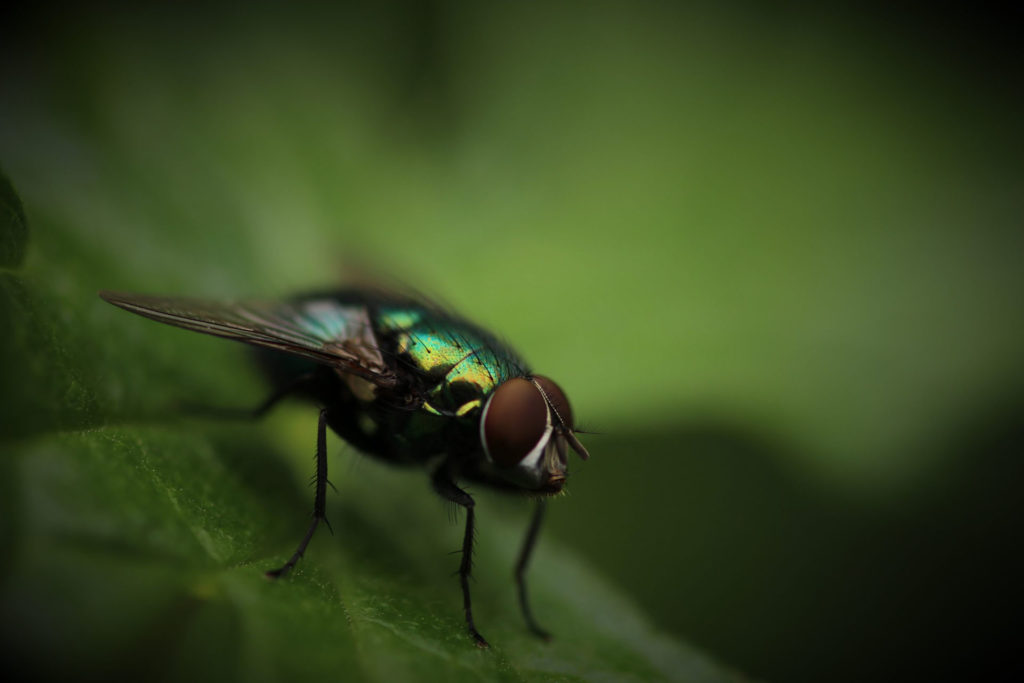
This is why it sometimes seems that flies suddenly appear in large numbers as soon as it starts to warm up. These flies will take a little while to become mature enough to start laying eggs (a few days or weeks depending on the temperatures), so setting your traps early, can help reduce the reproductive potential of that first flush of flies.
Maintenance
The fly trap is easy to use as long a few important points are kept in mind.
- Make sure there is always water in the trap. If you allow the trap to dry out, it will stop working and adding water at that point will not get it going again.
- If the weather is mild to warm, hang the trap where it will get some sunlight, such as the northern side of trees or north facing structures. This will keep the contents warm and that attractive smell wafting into the air.
- If the weather is really hot (above 35oC), it is important to move that trap into the shade – you might shift it into a shady spot of the tree, or take to the southern side of the shed where it will be shaded. Flies themselves will start spending more time in the shade the hotter it gets above 35 oC, so this puts the trap in areas they are more likely to be. This will also reduce the evaporation rate of the water from the trap.
Disposal The Fly Trap
The method of disposing of trap contents will depend on where you live and what is available to you.
- Deep burial – this is a recommended method of disposal because all of the trap contents are organic and can be recycled by soil organisms. The most important point to remember is that if you have larvae in your trap, you need to bury the contents at least a spade-length deep into the ground. Backfill the hole and tamp the soil down firmly. Larvae would normally bury themselves a few centimetres into the ground to develop into pupae and subsequently adult flies. By burying them deeply, you prevent the completion of the lifecycle by those larvae in the trap.
- Composting – as in deep burial, the aim is to return the organic material into the soil, but in this case, the trap contents are composted. An actively managed compost system, such as a tumble bin or regularly turned heap, will recycle the trap contents quite quickly, but if the compost system is just garden pile or compost heap, again it will be important to bury the contents deeply. Some people put their trap contents into their worm farm, which is also fine if larvae are not present. However, worm farms tend to be quite shallow, so if larvae are present, it is better to use a different disposal method.
- Kerbside FOGO bin – If you don’t have a garden into which you can bury the trap contents, drain off any excess water, and tip the contents into a compostable kitchen caddy liner with some strips of absorbent paper to take up the moisture. Dispose of this in your FOGO (Food Organics and Garden Organics) kerbside collection bin. Check with your council for acceptable liner brands – look for the ones with approved compostable codes.

- Kerbside rubbish – if you don’t have a garden or FOGO bin service, you can tip the contents into a plastic bag and place it in your kerbside waste bin.
Disposal is best carried out outside in the fresh air. There is no doubt that the flytrap is a bit smelly by the time you need to dispose of the contents, and there are a few things you can do to manage this.
- Before you start, half fill a bucket with water for rinsing the trap and have it handy. You may also want to wear rubber gloves in case of spillage.
- Prepare your disposal method (dig your hole or set your bag up over a container to keep it open and ready)
- If you are really sensitive to the smell, at this point you can introduce some pleasant smelling substance to counteract the fly smell – crushing mint or lavender can help, or use a commercial perfume.
- Finally, grab your trap, undo the lid and dump the contents.
- If you are burying the contents, quickly fill the trap with water from your bucket, give it a swirl and pour this into the hole as well. Then back fill the hole and tamp down firmly.
- Place the trap under the water in the bucket, and add a dash of dishwashing liquid for washing.
- Rinse the trap thoroughly.
You can re-use your trap numerous times over the fly season by re-baiting with a fresh bait which can be purchased at your local hardware store.
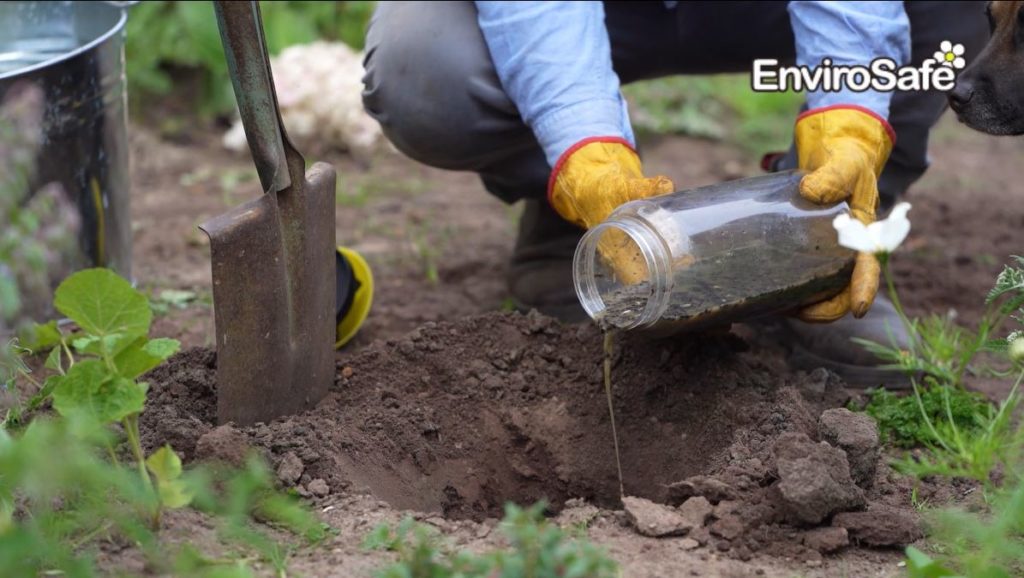

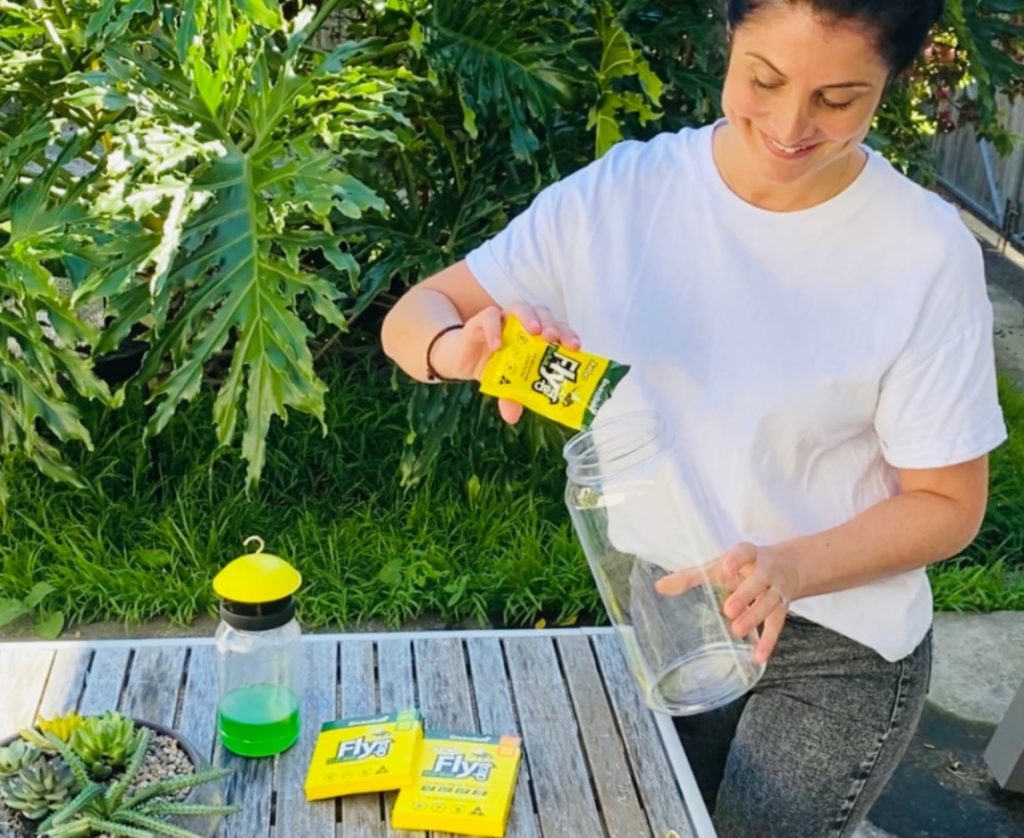
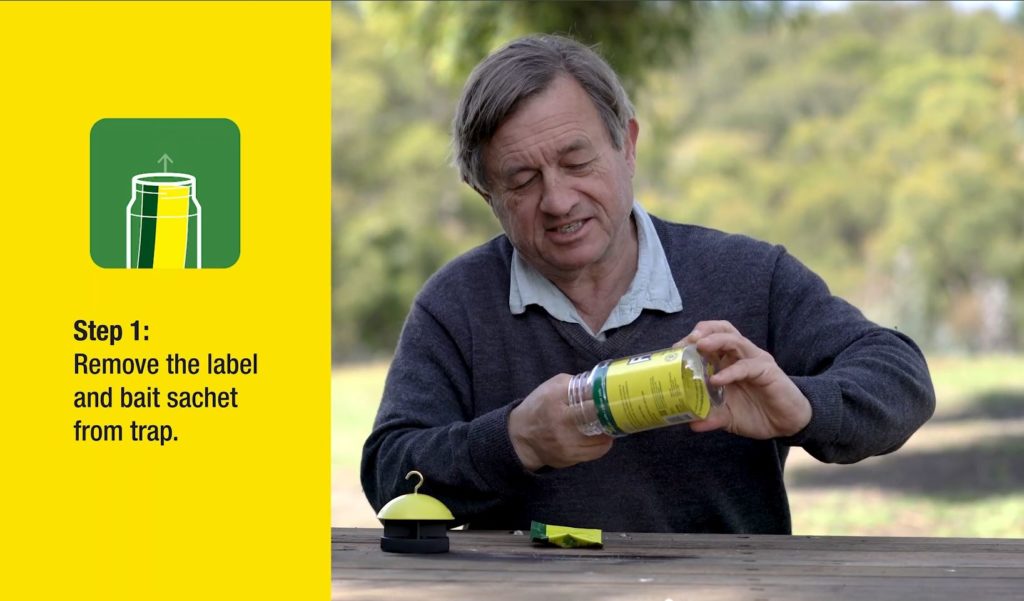

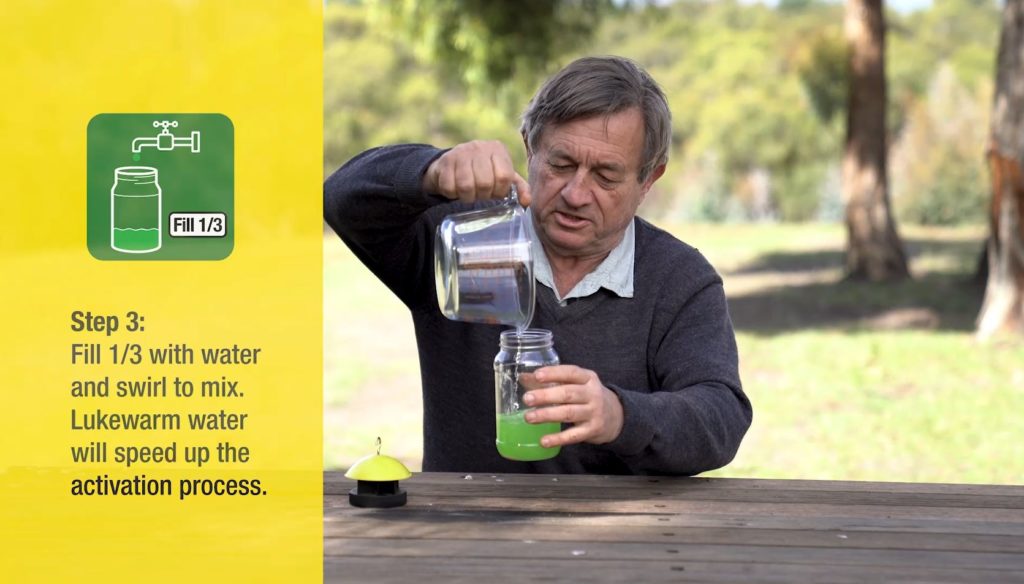

Hi,
I have used your traps for years with amazing results. This year though when I recharge them, the contents turn a sort of blueish colour(maybe pinkish, I am a bit colour blind) after a few days and they seem to stop attracting flies. Can you advise what is happening?
thanks
I have nowhere l can bury the contents of the fly trap and have only so far ( twice ) emptied it onto the lawn near an ants nest. Sooner than l would imagine ants could clear them up, there is little sign they were there. 80 plus flies ? Are they dead or just knocked out and come back to life. Love how this trap lures them in but not sure if my method is ok.
One more really positive aspect to these traps, is that if your somewhat careful, you’ll never need to keep buying the attractant other than the original, the resultant fly juice is self perpetuating in attracting more flys. When emptying, only empty three quarters of the fly/maggot paste and leave a bit over a finger of fly juice in the bottle. With the lid off, rinse or spray the upper half of the container to wash down the leftover wings and legs stuck to the side, and to add some water, but not so much that it is clear, you need to maintain the ‘paste’. If it’s cleaned and cleared to where the leftovers are floating in clear water, the water will need to evaporate and will take a few more days to re-take. If you’ve left a decent maggot/paste after a day it will warm up again and ready to go again. Don’t be afraid to give it a swish occasionally as well as it’s warming up. No need to buy more ‘attractant’, the rotting smell will attract the next lot of flies within a day when it’s warm. Once it’s started, if you’re careful you can keep it going perpetually. These are brilliant devices and recommend them wholeheartedly. However, as mentioned above, at any point if it’s allowed to go totally bone dry, you’ll need to start from scratch.